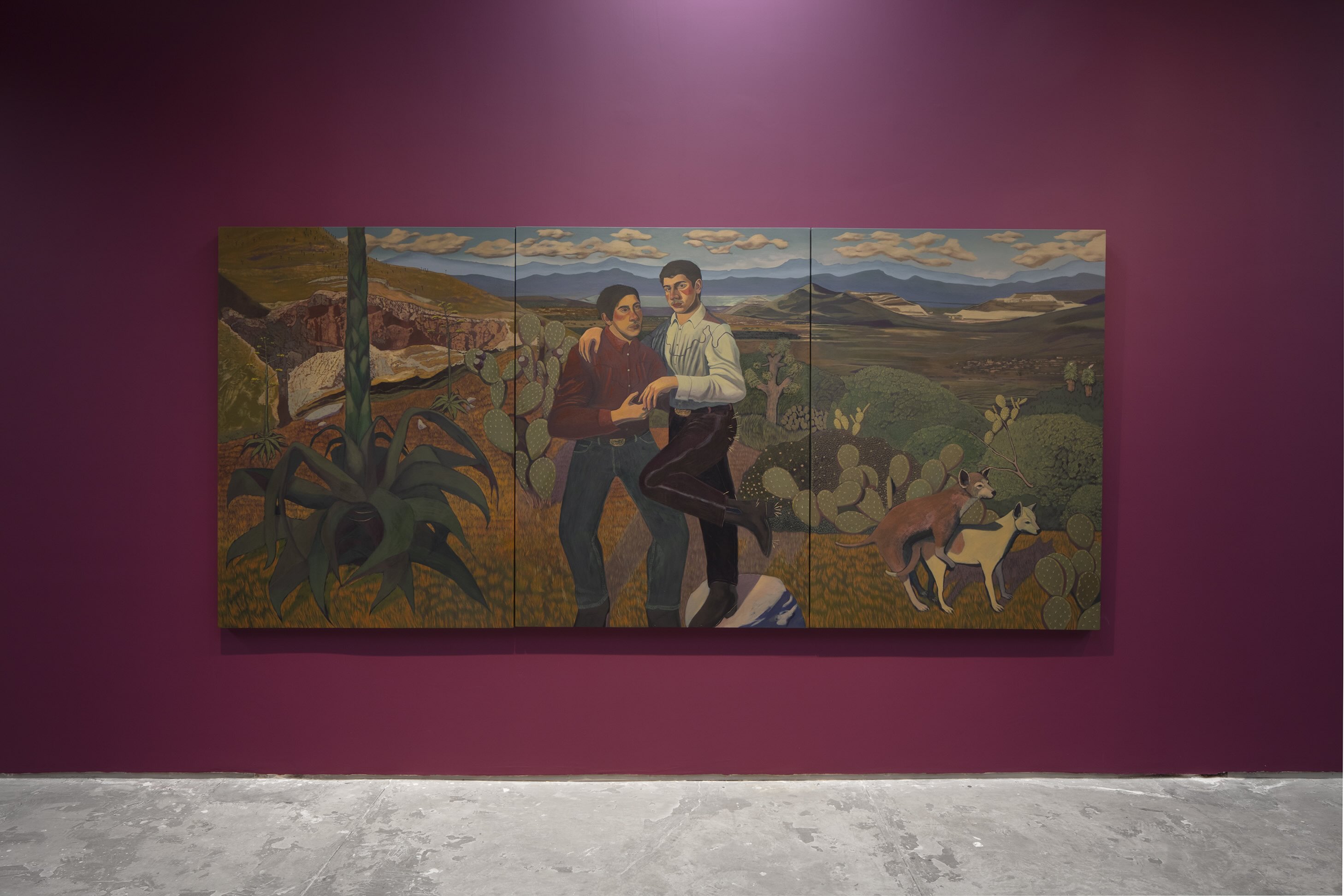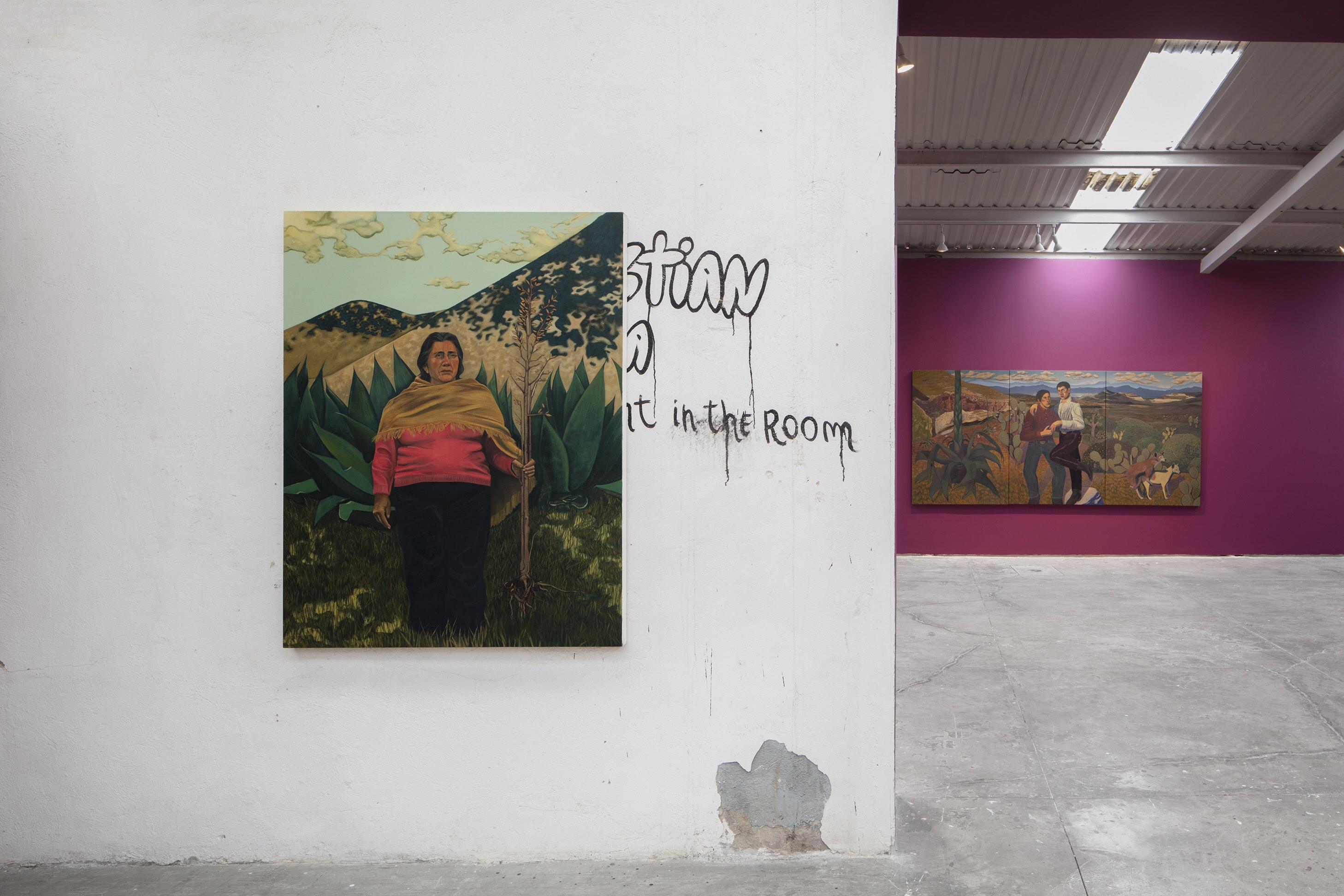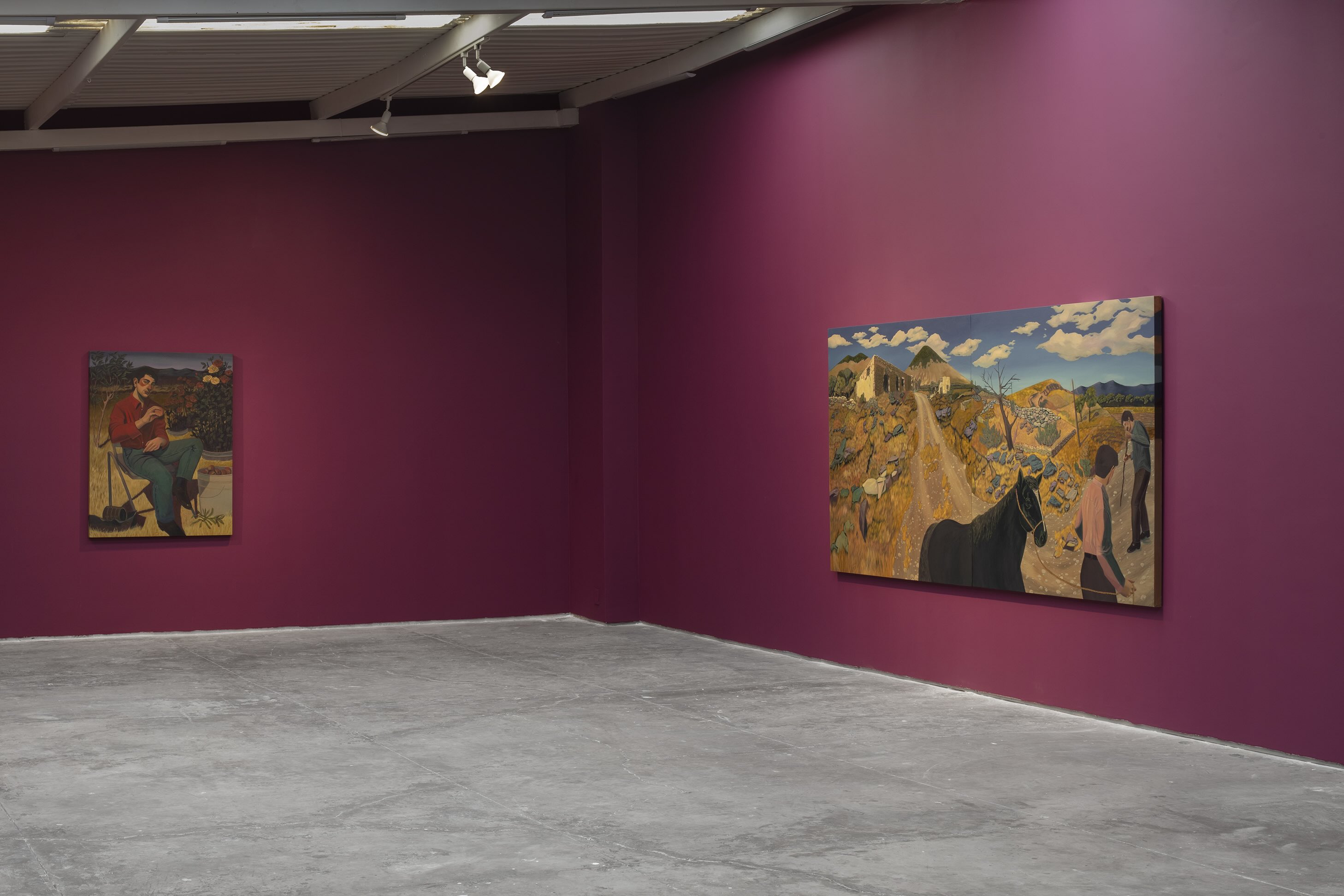
Review
Salaverna: Ángel Cammen at Bodega OMR
by Diego E. Sánchez
Reading time
4 min
In Salaverna, the latest exhibition at Bodega OMR, Ángel Cammen turns his gaze toward the Zacatecan town where his paternal grandmother was born. Each oil painting functions as a window. The portrait of his grandmother opens the show: a gesture of origin, a family bond, and an intimate homage that sets the tone for the entire exhibition.
From there, the work unfolds as a journey through memory and nostalgia: abandoned houses that hold stories, magueys and orange trees, horses roaming the land of dirt and rock, low clouds and hills bathed in light.

Within these landscapes, Cammen paints scenes in which self-portraits and family portraits coexist; among them is his partner, Jonathan—a constant presence in his work. The figures seem to follow you with their eyes, attentive and silent, as if sharing a secret and inviting you into their world. The blush on their cheeks adds a layer of hidden depth, suggesting aspects of their inner selves.
In his self-portraits, Cammen sometimes appears with delicate gestures—painting his lips or posing in ways that reveal a connection to his femininity; gestures that function not necessarily as a mirror but as an intimate and mysterious construction that reveals as much as it conceals. This becomes a way for the artist to imbue his figures with sensitivity and closeness to the viewer.
The contrast is evident even in the exhibition’s installation: the purple wall highlights the paintings and amplifies their presence, while the arid, rural, almost desert-like landscapes intensify the vivid colors of the figures. Reds and pinks stand out and generate a visual tension that reflects the balance between the intimacy of the figure and the symbolic charge of the landscape, inviting the viewer to linger over every detail.
What makes Cammen’s work singular is not only the sensitivity of his characters, the color palette he employs, or his clear connection to landscape and nature, but the way his artistic practice functions as a gesture of rootedness.
Cammen lives with his partner at the foot of Cerro del Topo Chico in Nuevo León. From this everyday landscape, he seems to have built a bridge to Salaverna—the place where his father grew up. Each painting seems to hold on to places and loved ones, freezing moments that resist the passage of time.

His work dialogues with the legacy of Mexican figurative self-portraiture; however, in Salaverna, he expands this gaze toward the landscape as a territory of memory and belonging, from a deeply intimate position.
At the same time, his landscapes and portraits connect with collective memory, rescuing marginalized spaces and engaging in contemporary conversations about identity, territory, and genealogy. His paintings reveal personal histories—his grandmother’s life, his father’s, his own intimacy—and transform the private into a shared territory.
Although the town was emptied, its faces, paths, and colors survive in his work. Each canvas holds a thread linking Cammen to his roots. Salaverna, now a ghost town after forced displacement to make way for an open-pit mine, emerges in his paintings not only as a lost setting but as a space of symbolic return. In one of the works, he appears driving through the town with what seems to be his father, as if the painting reconstructed both the landscapes and the family stories.
.jpg?alt=media&token=bc27f3f8-c0c7-49d4-b584-65d0ce9359ed)
The exhibition is a journey through memory and an act of grounding—a constant homage to what once was, and a way of keeping remembrance alive. In this gesture, the intimate and the collective intertwine: painting becomes a bridge that sustains a dialogue between past and present, identity and memory, resisting the passage of time and oblivion.
— Diego E. Sánchez
Translated to English by Luis Sokol
Published on October 10 2025